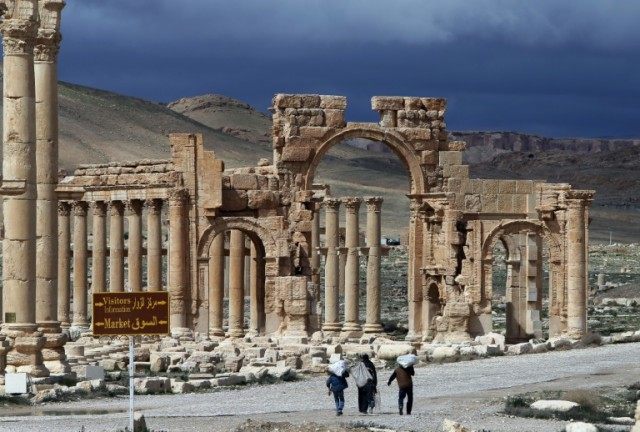Archaeologists have offered a grim assessment of the damage wrought by Islamic State militants to a museum in the Syrian city of Palmyra, suggesting it is far more extensive than was first thought.
The museum itself was destroyed and some of its most distinctive statues were shattered by the Muslim extremists during the 10 months that ISIS controlled the town before being expelled last month. The militants had cut off the heads and hands of statues and demolished others before being driven out of the city.
Bartosz Markowski of the Archaeological Center at Warsaw University, revealed Saturday that most of the 200 objects on display on the ground floor had been destroyed, smashed by hammers and mallets, and many other artefacts were stolen, presumably for sale on the black market.
Markowski and his colleagues spent a week painstakingly collecting fragments of priceless broken sculptures and preparing them to be sent to Damascus for conservation in a rescue mission they hope will help salvage most of its contents.
Last fall Islamic State militants demolished three ancient arches in Palmyra, as part of their campaign to obliterate important historic monuments across the territories of Iraq and Syria.
The UK-based Syrian Observatory for Human Rights said the jihadists used explosives to destroy the 2,000-year-old arches while leaving the supporting columns in place, apparently because the symbols and inscriptions on the arches clash with the radical Islamist ideology of the group.
The Islamic State believed the pre-Islamic monuments of the region to be idolatrous. After seizing the city in May, 2015, ISIS extremists destroyed the shrine of Baal Shamin and the Temple of Bel. The Temple of Bel was 2,000 years old and regarded as the greatest jewel of Palmyra’s antiquities.
Along with ideological opposition to the monuments, ISIS also used the sale of ancient artifacts on the black market to fund the war effort of the “Caliphate.”
The Islamic State’s systematic pillaging and demolition of cultural artifacts in the Middle East has been called the worst large-scale destruction of the region’s cultural heritage since the Second World War.
The terrorists, who have struggled to finance an expensive war especially with falling oil prices and coalition bombing of ISIS-held oil fields, have drawn a significant portion of their income from the sale of precious historical treasures. For the jihadists such a situation is a win-win, since they derive substantial economic benefit from the looting as well as stripping an entire region of important ties to its religious and cultural patrimony.
Palmyra was declared a World Heritage Site by UNESCO, and the museum was among the biggest tourist attractions in Syria. Prior to Syria’s civil war, which began in 2011, Palmyra attracted 150 thousand tourists a year.
Follow Thomas D. Williams on Twitter Follow @tdwilliamsrome

COMMENTS
Please let us know if you're having issues with commenting.